
by Prof. Michel Chossudovsky
from
GlobalResearch Website
Part 1
Thinking the Unthinkable
The Pentagon's Plan to Nuke Libya
March 30, 2011
A war on Libya has been on the
drawing board of the Pentagon for more than 20 years.
On April 14th 1986, Ronald Reagan had ordered a series of bombings
directed against Libya under "Operation El Dorado Canyon", in
reprisal for an alleged Libya sponsored terrorist bombing of a
Berlin discotheque. The pretext was fabricated. During these air
raids, which were condemned by both France and Italy, Kaddafi's
residence was bombed killing his younger daughter.
Barely acknowledged by the Western media, a planned attack on Libya
using nuclear weapons, had been contemplated by the Clinton
Administration in 1997, at the height of the Monica Lewinsky
scandal.
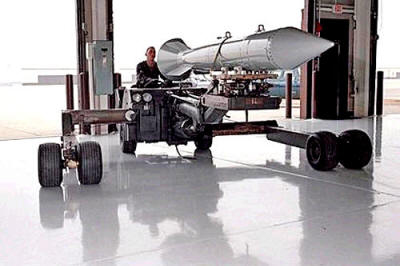
The Department of Defense had developed a new
generation of bunker buster tactical nuclear weapons for use in the Middle
East and Central Asia
The B61-11 earth penetrating weapon using a nuclear warhead had not been
tested. It was part of the B61 series, coupled with a so-called "low yield"
nuclear warhead.
According to US military sources,
"If used in North Korea, the radioactive
fallout [of the B61-11] could drift over nearby countries such as
Japan."
(B61-11
Earth-Penetrating Weapon, Globalsecurity).
The B61-11 earth-penetrating version of the B61
was configured initially to have a "low" 10 kiloton yield, 66.6 percent of a
Hiroshima bomb, for (post-Cold War) battlefield operations in the Middle
East and Central Asia.
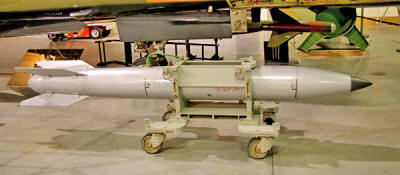
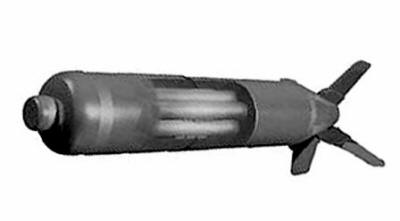
The Pentagon's Plan to Nuke
Libya
The B61-11 tactical nuclear weapon was slated by
the Pentagon to be used in 1997 against the "Kaddafi regime".
"Senior Pentagon officials ignited
controversy last April [1997] by suggesting that the earth-penetrating
weapon [nuclear] would soon be available for possible use against a
suspected underground chemical factory being built by Libya at Tarhunah.
This thinly-veiled threat came just eleven
days after the United States signed the African Nuclear Weapons Free
Zone Treaty, designed to prohibit signatories from using or threatening
to use nuclear weapons against any other signatory, including Libya."
(David Muller,
Penetrator N-Bombs, International
Action Center, 1997).
Tarhunah has a population of more than
200,000 people, men women and children.
It is about 60 km East of Tripoli. Had this
"humanitarian bomb" (66 % of a Hiroshima bomb) been launched on this
"suspected" WMD facility, it would have resulted in tens of thousands of
deaths, not to mention the nuclear fallout...
The man behind this diabolical project to nuke Libya was Assistant Secretary
of Defense Harold Palmer Smith Junior.
"Even before the B61 came on line, Libya was
identified as a potential target".
(Bulletin
of the Atomic Scientists - September/ October 1997 p. 27)
Harold Smith had been appointed by
President Bill Clinton to oversee nuclear, chemical, and biological defense
programs with responsibilities,
"for reduction and maintenance of the US
arsenal of nuclear weapons".
From the outset, his actual mandate, was not
reduce but to increase the nuclear arsenal by promoting the development of a
new generation of nuclear weapons for use in the Middle East war theater.
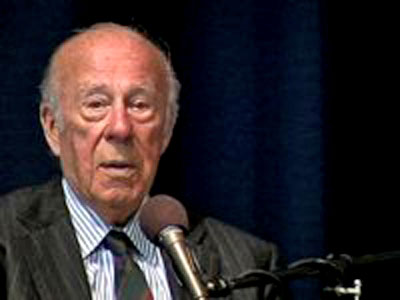
Harold Palmer Smith Junior
Testing the B611-11
Nuclear Bomb on an Actual Country
The Department of Defense's objective under Harold Smith's advice was to
fast track the "testing" of the B611-11 nuclear bomb on an actual country:
Five months after [Assistant Defense
Secretary] Harold Smith called for an acceleration of the B61-11
production schedule, he went public with an assertion that the Air Force
would use the B61-11 [nuclear weapon] against Libya's alleged
underground chemical weapons plant at Tarhunah if the President decided
that the plant had to be destroyed.
"We could not take [Tarhunah] out of
commission using strictly conventional weapons," Smith told the
Associated Press.
The B61-11 "would be the nuclear weapon
of choice," he told Jane's Defense Weekly.
Smith gave the statement during a breakfast
interview with reporters after Defense Secretary William Perry had
earlier told a Senate Foreign Relations Committee hearing on chemical or
biological weapons that the U.S. retained the option of using nuclear
weapons against countries armed with chemical and biological weapons.
(The
Birth of a Nuclear Bomb - B61-11)
While the Pentagon subsequently denied its
intention to bomb Libya's Tarhunah plant, it nonetheless clarified that,
"Washington would not rule out using nuclear
weapons [against Libya]".
(Ibid)
Nukes and Mini-Nukes -
Iraq and Afghanistan
The US military contend that "mini-nukes" are "humanitarian bombs" which
minimize "collateral damage". According to scientific opinion on contract to
the Pentagon, they are "harmless to the surrounding civilian population
because the explosion is underground",
The B61-11 is a bon fide thermonuclear nuclear bomb, a Weapon of Mass
Destruction (WMD)
in the real sense of the word.
Military documents distinguish between the Nuclear Earth Penetrator (NEP)
and the "mini-nuke"
which are nuclear weapons with a yield of less than 10 kilotons (two thirds
of a Hiroshima bomb).
The NEP can have a yield of up to a 1000
kilotons, or seventy times a Hiroshima bomb.
This distinction between mini-nukes and the NEP is in many regards
misleading. In practice there is no dividing line. We are broadly dealing
with the same type of weaponry: the B61-11 has several "available yields",
ranging from "low yields" of less than one kiloton, to mid-range and up to
the 1000 kiloton bomb.
In all cases, the radioactive fallout is devastating.
Moreover, the B61 series of thermonuclear
weapons includes several models with distinct specifications:
-
B61-11
-
B61-3
-
B61- 4
-
B61-7
-
B61-10
Each of these bombs has several "available
yields".
What is contemplated for theater use is the "low yield" 10 kt bomb, two
thirds of a Hiroshima bomb.
The Libya 1997
"Nuclear Option" had set the Stage
Neither the
Bush nor the
Obama
administrations have excluded using thermonuclear bunker buster bombs in the
Middle East war theater.
These weapons were specifically developed for
use in post Cold War "conventional conflicts with third world nations". They
were approved for use in the conventional war theater by the US Senate in
2002, following the adoption of the 2001
Nuclear Posture Review.
In October 2001, in the immediate wake of 9/11, Defense Secretary Donald
Rumsfeld envisaged the use of the
B61-11 in Afghanistan. The stated targets
were Al Qaeda cave bunkers in the Tora Bora mountains.
Rumsfeld stated
at the time that while the,
"conventional" bunker buster bombs, "'are
going to be able to do the job',... he did not rule out the eventual use
of nuclear weapons."
(Quoted in the Houston Chronicle, 20
October 2001.)
The use of the B61-11 was also contemplated
during the 2003 bombing and invasion of Iraq.
In this regard, the B61-11 was described as "a
precise, earth-penetrating low-yield nuclear weapon against high-value
underground targets", which included Saddam Hussein's underground bunkers:
"If Saddam was arguably the highest value
target in Iraq, then a good case could be made for using a nuclear
weapon like the B61-11 to assure killing him and decapitating the
regime"
(Defense News, December 8, 2003)
"All Options are on the table"... Sheer madness.
Nukes to implement regime change...
What Rumsfeld had proposed, as part of a
"humanitarian mandate", was the use of a nuclear bomb to 'take out' the
president of a foreign country.
(Author's note: There is no
documentary evidence that the B61-11 was used against Iraq).
Part 2
Dangerous Crossroads.
Is America Considering the Use of Nuclear Weapons against
Libya?
April 7, 2011
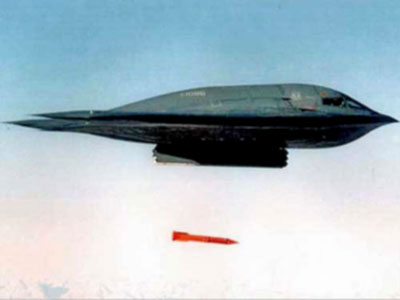
Simulated Drop
of B61-11 nuclear bomb from a B-2 Spirit Stealth bomber
Shortly after the commencement
of the Libya bombing campaign on March 19, the Pentagon ordered the
testing of the
B61-11 nuclear bomb.
These tests announced in an
April 4 press release, pertained to the installed equipment and
weapon's components. The objective was to verify the functionality
of the nuclear bomb...
The B-2 Spirit Stealth bomber is the "chosen carrier" of the B61-11
nuclear bombs. The B-2 Spirit Stealth bomber out of Whiteman Air
Force Base in Missouri was not only sent on a mission to bomb Libya
at the very outset of the air campaign, it was subsequently used in
the testing of the B61 Mod 11 nuclear bomb.
The B61-11 has a yield of two thirds of a Hiroshima bomb.
-
Why were
these tests of the equipment and functionality of a tactical nuclear
weapon scheduled shortly after the onset of the Libya bombing
campaign?
-
Why now?
-
Is the timing of these tests coincidental or are they in any way
related to the chronology of the Libya bombing campaign?
U.S. Air Force Global Strike Command, which is responsible for the
coordination of US bombing operations directed against Libya was
also involved in the testing of the B61-11 nuclear bombs.
Both the bombing of Libya by the B-2 Spirit Stealth bomber (see
image above) on March 19-20, as well as the testing of the
functionality of the B61-11 nuclear bomb (announced April 4) were
implemented out of the same US Air Force base in Missouri.
The Pentagon had envisaged the use of the B61 Mod 11 nuclear bomb against
Libya. Categorized as a mini-nuke,
the B61-11 is a 10 kiloton bomb with a
yield equivalent to two thirds of a Hiroshima bomb. (See
Part 1 above)
The Pentagon's 1996 plan to nuke Libya had been announced in no uncertain
terms at a press briefing by Assistant Secretary of Defense Harold P.
Smith:
"[The] Air Force would use the B61-11
[nuclear weapon] against Libya's alleged underground chemical weapons
plant at Tarhunah if the President decided that the plant had to be
destroyed.
'We could not take [Tarhunah] out of commission using
strictly conventional weapons,' Smith told the Associated Press.
The
B61-11 'would be the nuclear weapon of choice,' he told Jane Defence
Weekly.
(The
Nuclear Information Project: the B61-11)
Clinton's Defense Secretary William Perry
- who was present at the press briefing - had earlier told a Senate Foreign
Relations Committee that,
"the U.S. retained the option of using
nuclear weapons against countries [e.g. Libya] armed with chemical and
biological weapons."
(Ibid, See also Greg Mello, The Birth Of
a New Bomb; Shades of Dr. Strangelove! Will We Learn to Love the B61-11?
The Washington Post, June 01, 1997)
The Department of Defense's objective was to
fast track the "testing" of the B61-11 nuclear bomb on an actual country and
that country was Libya:
"Even before the B61 came on line, Libya was
identified as a potential target".
(Bulletin of the Atomic Scientists -
September/ October 1997, p. 27 - For further details see
Part 1 above.)
While the 1996 plan to bomb Libya using tactical
nuclear weapons was subsequently shelved, Libya was not removed from the
"black list":
"The Qadhafi regime" remains to this date a
target country for a pre-emptive ("defensive") nuclear attack.
As revealed by William Arkin in early 2002,
"The Bush administration, in a secret policy review... [had] ordered the
Pentagon to draft contingency plans for the use of nuclear weapons
against at least seven countries, naming not only Russia and the "axis
of evil" Iraq, Iran, and North Korea but also China, Libya and Syria."
(William Arkin, "Thinking the
Unthinkable", Los Angeles Times, 9 March 2002 and "The U.S.
Is Thinking the Unthinkable"
Democracy
Now!, January 30, 2003 - below video).
According to the 2001 Nuclear Posture Review,
adopted by the Senate in 2002, Libya is on the "Pentagon's list".
Moreover, it is also important to emphasize that
Libya was the first country to be tagged and formally identified (at a
Department of Defense press briefing) as a possible target for a US
sponsored nuclear attack using the B61 Mod 11 nuclear bomb.
This announcement was made in 1996, five years
prior to the formulation of the pre-emptive nuclear war doctrine under
the
Bush administration (i.e. the 2001 Nuclear Posture Review).
The Testing of the
B61-11 Nuclear Bomb
Announced on April 4, 2011
What is the relevance of the history of the B61-11 nuclear bomb and earlier
threats directed by the Clinton administration against Libya?
Has the project to nuke Libya been shelved or is Libya still being
contemplated as a potential target for a nuclear attack?
Shortly after the commencement of the Libya bombing campaign on March 19,
the US Department of Defense ordered the testing of the B61-11 nuclear bomb.
These tests pertained to the installed equipment and weapon 's components of
the nuclear bomb.
The announcement of these tests was made public on April 4; the precise date
of the test was not revealed, but one can reasonably assume that it was in
the days prior to the April 4 press release by the National Nuclear Security
Administration (NNSA Press Release,
NNSA Conducts Successful B61-11 JTA
Flight Test, Apr 4, 2011.)
The B-2 Spirit Stealth bomber is the US Air Force's chosen "carrier" for the
delivery of the B61 Mod 11 nuclear bomb. In late March or early April (prior
to April 4), the B-2 Spirit Stealth bomber from the 509th Bomber Wing
operating out of Whiteman Air Force Base, was used in the so-called "Joint
Test Assembly" (JTA) of the B61 Mod 11 nuclear bomb.
In other words, the B61-11 was tested using the same B-2 Spirit Stealth
bombers out of Whiteman Air Force Base, which were used to bomb Libya at the
very outset of the air campaign.

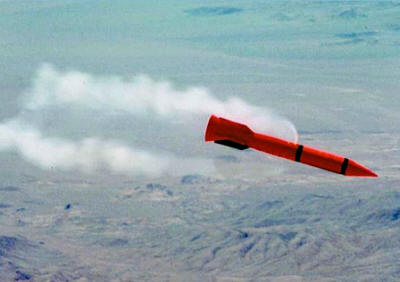
B61-11 Simulation
The Joint Test Assembly (JTA) of the B61-11
This JTA testing was undertaken by the National Nuclear Security
Administration (NNSA) together with the U.S. Air Force Global Strike
Command, which coincidentally is responsible for the coordination of US
bombing operations directed against Libya as well as ongoing operations in
Iraq and Afghanistan.
"The JTA was produced by the NNSA in support of the Joint Surveillance
Flight Test Program between the Department of Defense and the NNSA"
(Press
release, op cit)
The Joint Test Assembly (JTA) in the case of the B61 Mod 11 nuclear bomb,
requires testing the equipment of the B61-11 using a proxy conventional
non-nuclear warhead.
Essentially what is involved is to test all the
installed equipment on the nuclear bomb and ensure its functionality without
actually having a nuclear explosion.
The JTA test,
"was built to simulate the
actual B61-11 weapon configuration utilizing as much war reserve hardware as
feasible. It was assembled at the Pantex plant in Amarillo, Texas and was
not capable of nuclear yield, as it contained no special nuclear materials."
(Press Release,
NNSA Conducts Successful B61-11 JTA Flight Test, Apr 4,
2011)
“JTA tests [are to ensure] that all weapon systems [e.g. B61-11 nuclear
bomb] perform as planned and that systems are designed to be safe, secure
and effective”...
A JTA contains instrumentation and sensors that monitor
the performance of numerous weapon components [e.g. of the B61-11] during the
flight test to determine if the weapon functions as designed. This JTA also
included a flight recorder that stored the bomb performance data for the
entire test. The data is used in a reliability model, developed by Sandia
National Laboratories, to evaluate the reliability of the bomb.
(Ibid)

B61 Model 11 nuclear bomb at Whiteman Air force base
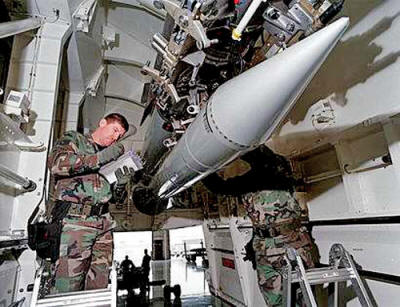
The
B-2 Spirit Stealth Bomber operating out of the Whiteman Air Force Base
was reported to have "delivered and released" the B61-11 JTA at the Tonopah
Test Range in Nevada, which is routinely used to test nuclear ordnance. (See
Press Release, op cit.).
The
Tonopah Test Range while owned by the US Department of Energy, is
managed and operated by Sandia National Laboratories, a division of
America's largest weapons producer Lockheed-Martin (under permit with the NNSA).
(See
http://prod.sandia.gov/techlib/access-control.cgi/2004/042812.pdf)
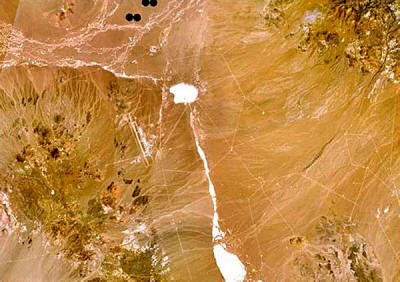
Aerial View of Tonopah Test Range
where the B61 11 JTA was tested using a
B-2 Spirit Stealth bomber.
Source NASA.
The Deployment of B-2 Stealth bombers to Libya
-
Why were these JTA tests of the equipment and functionality of a tactical
nuclear weapon scheduled shortly after the onset of the Libya bombing
campaign?
-
Why now?
-
Is the timing of these tests coincidental or are they in any way related to
the chronology of the Libya bombing campaign?
It is worth noting that the U.S. Air Force Global Strike Command was in
charge of both the JTA tests of the B61-11 as well as the deployment of
three B-2 Spirit Stealth bombers to Libya on March 19.
"Three B-2 Spirit bombers, piloted by two men each, made it back after the
11,418-mile round trip from the Whiteman Air Force Base in Missouri - where
they are kept in special hangars - to Libya, where they hit targets on
forces loyal to Colonel Gaddafi and back
again."
(Touchdown:
B-2 stealth jets return after epic 11,500 mile journey to bomb Libyan
aircraft shelters,
Daily Mail, March 21, 2011)
In other words, both the deployment of the B-2s to the Libya war theater as
well as the JTA test (using the B-2 bomber for delivery) were coordinated
out of Whiteman Air Force base.
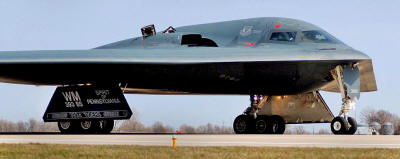
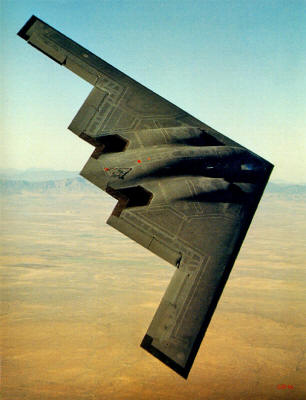
"Humanitarian war" is carried out through a "Shock and Awe" Blitzkrieg.
Three B-2 Spirit Stealth bombers were sent on a bombing mission at the very
outset of the Libya bombing campaign. According to the reports, they
returned to Whiteman Air Force base on March 21st. The reports suggest that
the three B-2s were carrying bunker buster bombs with conventional warheads.
The report suggests that the B-2 Stealth bombers dropped 45 one ton
satellite guided missiles on Libya, which represents an enormous amount of
ordnance:
"At $2.1bn, they are the most expensive warplanes in the world and
rarely leave their climate-controlled hangars. But when it does, the B-2
bomber makes a spectacularly effective start to a war - including during
this weekend's aerial attack on Libya's air defences."
(Daily Mail, March 21,
2011, op cit)
While we are not in a position to verify the accuracy of these reports, the
45 one-ton bombs correspond roughly to the B-2 specifications, namely each
of these planes can carry sixteen 2,000 pound (900 kg) bombs.
Returning to Whiteman Air force base on March 21.
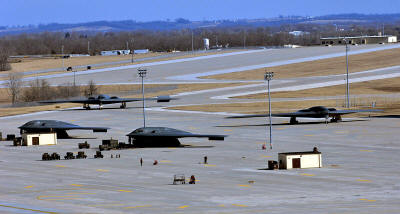
Whiteman Air Force Base
Concluding Remarks - The Decision to Use Nuclear Weapons
Through a propaganda campaign which has enlisted the support of
"authoritative" nuclear scientists, the B61-11 "mini-nuke" is presented as
an instrument of peace rather than war.
In an utterly twisted logic, low yield tactical nuclear weapons are
presented as a means to building peace and preventing "collateral damage".
In this regard, US nuclear doctrine ties in with the notion that the US-NATO
war under Operation Odyssey Dawn is a humanitarian undertaking.
The important question addressed in this article is whether the recent test
of a B61-11 is "routine" or was it envisaged by the DoD directly or
indirectly in support of
Operation Odyssey Dawn, implying the possible
deployment of mini nukes at some future stage of the Libya bombing campaign.
There is no clear-cut answer to this question.
It should be emphasized, however, that under the doctrine of "pre-emptive
nuclear war" mini nukes are always deployed and in "a state of readiness"
(even in times of peace). Libya was the first "rogue state" to be tagged for
a nuclear attack in 1996 prior to the approval of the mini nukes for
battlefield use by the US Congress.
The Pentagon claims that "mini-nukes" are harmless to civilians because "the
explosion takes place under ground". Not only is the claim of an underground
explosion erroneous, each of these ‘mini-nukes’, constitutes - in terms of
explosion and potential radioactive fallout - a significant fraction of the
atom bomb dropped on Hiroshima in 1945...
We are at a dangerous crossroads:
The rules and guidelines governing the use
nuclear weapons have been "liberalized" (i.e. "deregulated" in relation to
those prevailing during the Cold War era). The decision to use low yield
nuclear nuclear weapons (e.g. against Libya) no longer depends on the
Commander in Chief, namely president Barack Obama. It is strictly a military
decision.
The new doctrine states that Command, Control, and Coordination (CCC)
regarding the use of nuclear weapons should be "flexible", allowing
geographic combat commanders to decide if and when to use of nuclear
weapons:
Known in official Washington, as "Joint Publication 3-12", the new nuclear
doctrine (Doctrine for Joint Nuclear Operations, (DJNO) (March 2005)) calls
for "integrating conventional and nuclear attacks" under a unified and
"integrated" Command and Control (C2).
It largely describes war planning as a management decision-making process,
where military and strategic objectives are to be achieved, through a mix of
instruments, with little concern for the resulting loss of human life.
Military planning focuses on "the most efficient use of force", i.e. an
optimal arrangement of different weapons systems to achieve stated military
goals. In this context, nuclear and conventional weapons are considered to
be "part of the tool box", from which military commanders can pick and
choose the instruments that they require in accordance with "evolving
circumstances" in the "war theatre".
(None of these weapons in the
Pentagon's "tool box", including conventional bunker buster bombs, cluster
bombs, mini-nukes, chemical and biological weapons are described as "weapons
of mass destruction" when used by the United States of America and its
"coalition" partners).
Michel Chossudovsky,
Is the Bush Administration
Planning a Nuclear Holocaust? Global Research, February 22, 2006
Authors note
In researching these issues, I have attempted to present the documented
facts without drawing simple conclusions as to the potential use of nuclear
weapons in the Libya war theater.
Having examined the various facets of US nuclear doctrine for many years, I
have become increasingly aware that the use of nuclear weapons does not
belong to the field of abstraction. Neither does the testing of the
equipment of the B61-11 nuclear bomb including its various installed
functions.
The matter needs further examination, the release of more information,
discussion at all levels, questions in the US Congress and above all a
detailed, honest and unbiased media coverage.
It is my sincere hope that this article will contribute to an understanding
of US nuclear doctrine as well as a greater awareness of the impending
dangers of nuclear war.
Michel Chossudovsky
April 2011











